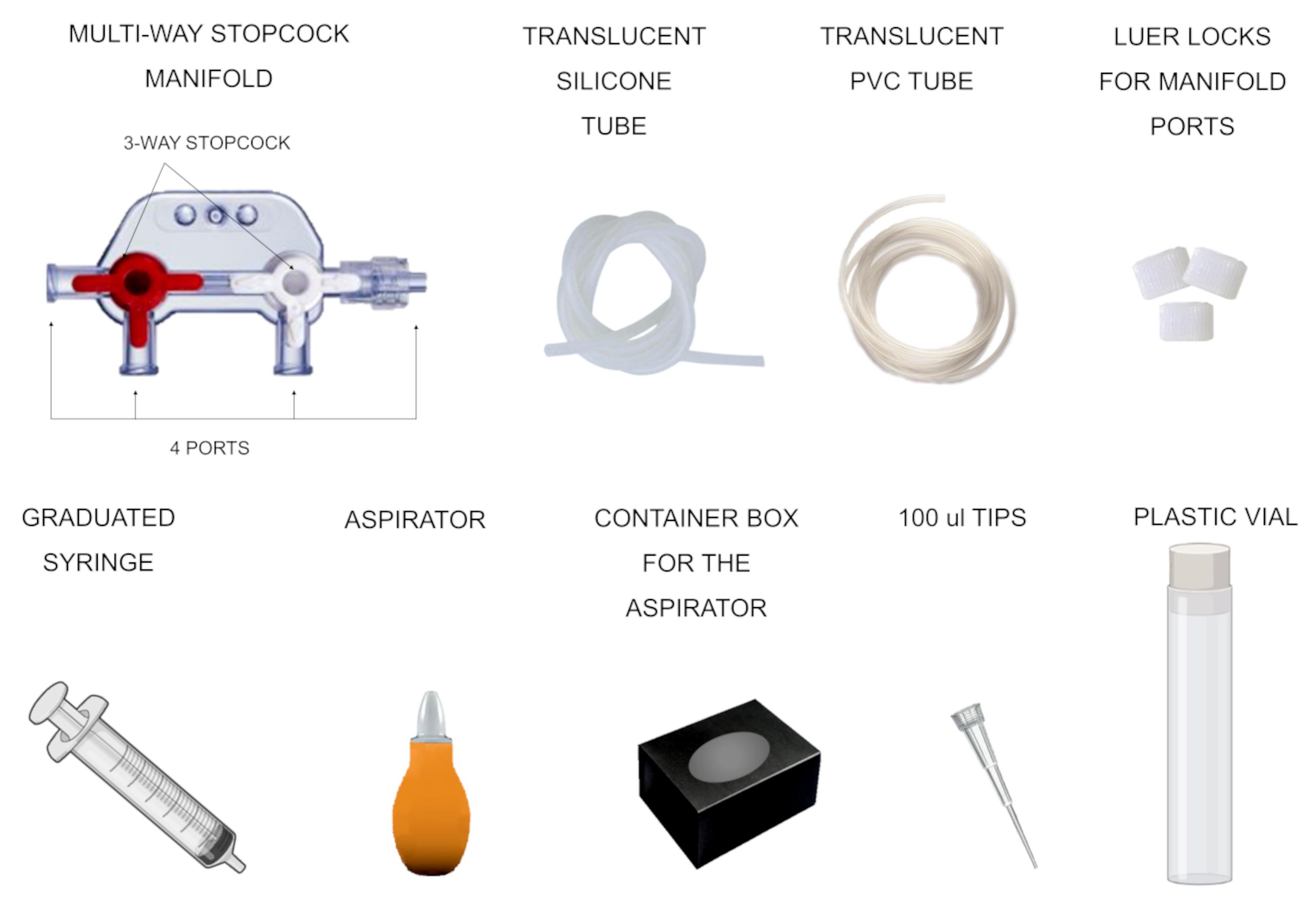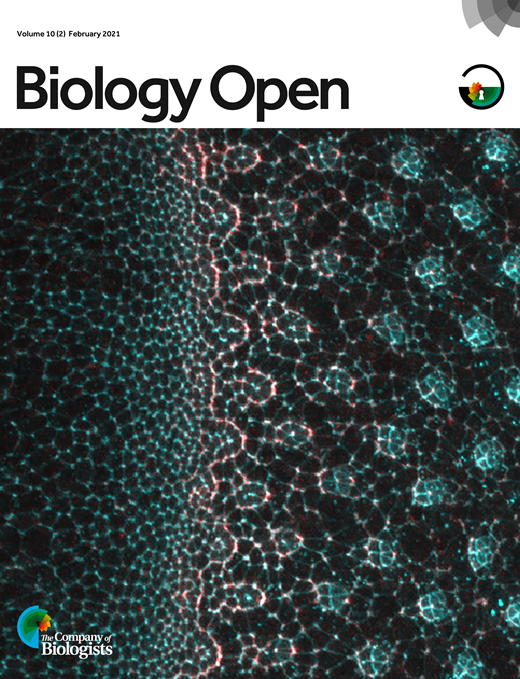- EN - English
- CN - 中文
A low-cost Portable Device to Deliver Smoke, Volatile or Vaporized Substances to Drosophila melanogaster , Useful for Research and/or Educational Assays
一种可用于研究和/或教育分析的向黑腹果蝇输送烟雾、挥发性或汽化物质的低成本便携式设备
发布: 2021年12月05日第11卷第23期 DOI: 10.21769/BioProtoc.4244 浏览次数: 2861
评审: Norma Velazquez UlloaIvan Sanchez DiazAnonymous reviewer(s)
Abstract
Drosophila melanogaster has been used to test drugs of abuse, substances with potential benefits for medical purposes, as well as contaminants and hazardous volatile compounds. This model has also been used for the characterization of behavioral changes, physiopathological consequences, and subcellular mechanisms of the use of cocaine, methamphetamines, ethanol, nicotine, cannabinoids, toluene, and other airborne volatile organic compounds. When testing these substances, routes of administration are important to define. Admixing the test compounds with water or food is one suitable option in many cases, but the inhalation route is especially suitable when the administration of one or more volatile compounds is desired. One advantage of the administration of substances via the inhalation route is its rapid exchange and distribution throughout the cuticle and the tracheal system. In addition, this route allows treating a large group of individuals simultaneously. Moreover, the inhalation route is frequently used to administer different drugs to humans. A good model system shares physiology and molecular pathways with humans, and D. melanogaster possesses almost 75% homologous genes associated with human diseases. Methodologies to deliver the abovementioned substances usually include customized devices. Herein, we focus on the development of a low-cost customized device useful to deliver smoke or vaporizable compounds to D. melanogaster. This approach might be applied for acute or chronic exposure to vaporized substances. In particular, our device was utilized for testing cigarette smoke and vaporized cannabis extract on cardiac performance of adult individuals during chronic treatment. We are describing how to set up this low-cost portable device, useful for research and/or educational assays, taking advantage of the amenability of D. melanogaster to test different compounds in relatively short periods, and especially including a large number of individuals at the same time.
Graphic abstract:

Custom-made device useful for inhalation pathway assays in Drosophila melanogaster.
Background
Drosophila melanogaster is a useful model for studying drugs of abuse, namely nicotine, cocaine, alcohol, and methamphetamines (Bainton et al., 2000; Velazquez-Ulloa, 2017; Morris et al., 2018; Chvilicek et al., 2020; Baker et al., 2021; Park et al., 2021), as well as substances with therapeutic potential as cannabis (Gómez et al., 2019). Moreover, this model organism has been utilized for studies of toxins (Broderick et al., 2006) and atmospheric pollutants (Wilson et al., 2005). This analysis involves physiological responses (Wilson et al., 2005; Gómez et al., 2019; Santalla et al., 2021), modulation of behavior (Bainton et al., 2000; Rigo et al., 2021), subcellular mechanisms (Petruccelli et al., 2018; Shohat-Ophir et al., 2012), and the relevance of genetic mutations (Sanchez-Díaz et al., 2015; Petruccelli et al., 2018; Rigo et al., 2021). Substances have been administrated orally as supplemented food, including through methods as the CApillary FEeder (CAFE) Assay (Sanchez-Díaz et al., 2015; Baker et al., 2021), or volatilized by use of specific devices (McClung and Hirsh, 1998; Filošević et al., 2018).
One of the main reasons for choosing the passive inhalation route relates to the drawback of oral administration of substances with bad taste, as a fly is not prone to eat drugs with bad taste (Pandey and Nichols, 2011). Advantageously, the inhalation pathway allows the delivery of drugs in a short period of time. The delivery of substances via inhalation increases the availability of the drug and the rate of absorption throughout the cuticle, evading the digestive tract. This way of administration also allows treating a large number of individuals simultaneously, instead of using injection procedures that require one-by-one application. Taking advantage of the demonstrated usefulness of D. melanogaster in modeling various human diseases, this route of administration is suitable for administrating drugs that humans typically consume by the inhalation route, like cannabis. Additionally, D. melanogaster is usually used to test air contaminants by means of this administration route. Different devices designed to provide substances to D. melanogaster include commercial components, are usually expensive, or have a complex design that hampers easy disassembly, transportation, and reassembly (Linde et al., 2014; Tatum-Gibbs et al., 2015).
In a recent publication, we assessed the effect of nicotine on the cardiac performance of Drosophila melanogaster. We found that chronic treatment of adult wild-type flies with vaporized nicotine increased heart rate and altered cardiac contraction/relaxation dynamics (Santalla et al., 2021). Experiments from our laboratory have shown that vaporized cannabis extract also modified heart activity. We observed that a short treatment with cannabis (vaporization of cannabis extract) increased the propensity to cardiac arrhythmias, while a prolonged cannabis dosage enhanced cardiac contractility (Gómez et al., 2019). Herein, we describe the method used for administrating smoke or vaporized substances to Drosophila melanogaster using an easy to mount and low-cost custom device. The protocol allows to simultaneously expose several flies to the substance, thereby saving time and reagents. Although our previously published articles describe the effects of tobacco smoke and vaporized cannabis on D. melanogaster cardiac performance, herein, we are emphasizing the assembly of the device, its maintenance, and the procedure for administrating substances. The experimental amenability of the fruit fly model provides key insights into physiopathological responses to test substances and the subcellular mechanisms involved, many of them conserved between taxa. Noteworthy, the fruit fly is an excellent model for educational purposes. By combining the feasibility of Drosophila and the portability of our small device, simple assays might be conducted for research and education purposes.
Materials and Reagents
Polystyrene fly vials and plugs (outer diameter: 25 mm, height: 95 mm. Flystuff, Superbulk® Pack Vials, catalog number: 32-113RL)
Regular cotton balls (e.g., Amazon.com Inc., Kendall/Covidien Prepping Cotton Ball, 500 Count ID product: MD44KDL2600Z.BG or any cosmetic, perfumery, pharmaceutics store) or Drosophila plugs for vials (BIOLOGICS, catalog number: 51-0505)
Paint brushes for pushing flies (Round Pointed Tip Nylon Hair, size 4, any brand, e.g., Amazon Basics, ID product PBR-01)
Paper towels (e.g., Amazon.com, Inc., Scott Essential Multifold Paper Towels ID product: 01840)
Disposable cigarettes (any commercially available, e.g., Philip Morris box 20, ID product: 48). However, reusable e-cigarettes can be used (e.g., Epuffer, Snaps rev4 rechargeable e-cigarette, product ID: 299246).
Filter (optional, e.g., Amazon.com Inc, TarBust Disposable Cigarette Filters Bulk Economy Pack, 300 Per Pack, catalog number: M1200805)
Drosophila Canton S wild type flies (Bloomington Drosophila Resource Center # 64349)
Flies can be kept at room temperature (RT). Under our standard conditions, stocks are maintained in an incubator at 25°C and 60% relative humidity, in a 12/12 h light-dark cycle. However, these incubation conditions can be modified as desired by the users according to the purpose of their experiments.
Agarose (Sigma, catalog number: A9539)
Dextrose (Sigma, catalog number: G8270-1KG)
Yeast (Genesee Scientific, catalog number: 62-108)
Gelidium Agar (Genesee Scientific, catalog number: 66-105)
Cornmeal (Genesee Scientific, catalog number: 62-100)
10% Nipagin (Nipagin-Genesee Scientific, catalog number: 20-258)
96% ethanol (Sigma, catalog number: 793213)
Herb weed cannabis (PlantAR Ciencia, Registration number: 46875)
Custom fly food, easy to be prepared for flies’ stocks maintenance (see Recipes)
Cannabis treatment (see Recipes)
Equipment
Drosophila incubator (Sheldon Manufacturing, Shel Lab, catalog number: SRI20PF)
Stereo microscope (Carl Zeiss, model: Stemi 508, or any standard stereoscope)
CO2 fly pad (Genesee Scientific, catalog number: 59-114)
CO2 tank and regulator available in your location (e.g., AIRGAS.INC, Industrial Grade Carbon Dioxide, Size 150 High Pressure Aluminum Cylinder, CGA-320 ID product CD 35A)
Vaporizer (Davinci®, model: Iq2)
Any other model or brand might be useful. We used a vaporizer available for cannabis. The alternative for cannabis and extract might be useful in testing other substances. An important feature that the vaporizer must fulfill is to have a temperature regulator. This will allow vaporizing specific components at a preset temperature.
Multi-way stopcock manifold
Kits include several manifolds, valves, and fittings (e.g., PRIMER BIOSCIENCE, Luer valve assortment kit, catalog number: 14011). Otherwise, one manifold is enough (e.g., Scientific Commodities. Inc, catalog number: 8596). The unit should include at least 4 ports and two valves (see Figure 1)
Luer locks for manifold ports (PRIMER BIOSCIENCE, Luer valve assortment kit, catalog number: 14011; or they can be purchased separately, e.g., Coler Parmer, Masterflex® Adapter Fittings Luer to Plug, catalog number: EW-30800-30)
Translucent silicone tube (Scientific Commodities. Inc, catalog number: BB518-250: 6.35 mm × 9.53 mm, ID and OD respectively)
Translucent PVC tube (Scientific Commodities. Inc, catalog number: BB31775-V/18: 6.40 mm × 9.51 mm, ID and OD respectively)
Syringe (20 ml) (LABBOX LABWARE, catalog number: SYRL-020-080, or similar supplier)
Aspirator (PRIORI, ID product: PP1532)
Container box (any standard small carton box)
Tips for 100 µl automatic pipettes. They are adequate for ensuring a proper flux of vapor and smoke, avoiding flies to escape across the cotton ball or the plug (Sigma-Aldrich, Greiner pipette tips, catalog number: Z617369-15000EA or another provider).
Items 6 to 13 are shown in Figure 1.

Figure 1. Components required to assemble the device used in the protocol.
Procedure
文章信息
版权信息
© 2021 The Authors; exclusive licensee Bio-protocol LLC.
如何引用
Santalla, M., Gómez, I. M., Valverde, C. A. and Ferrero, P. (2021). A low-cost Portable Device to Deliver Smoke, Volatile or Vaporized Substances to Drosophila melanogaster , Useful for Research and/or Educational Assays. Bio-protocol 11(23): e4244. DOI: 10.21769/BioProtoc.4244.
分类
生物工程 > 生物医学工程
药物发现
生物科学 > 生物技术
您对这篇实验方法有问题吗?
在此处发布您的问题,我们将邀请本文作者来回答。同时,我们会将您的问题发布到Bio-protocol Exchange,以便寻求社区成员的帮助。
提问指南
+ 问题描述
写下详细的问题描述,包括所有有助于他人回答您问题的信息(例如实验过程、条件和相关图像等)。
Share
Bluesky
X
Copy link









